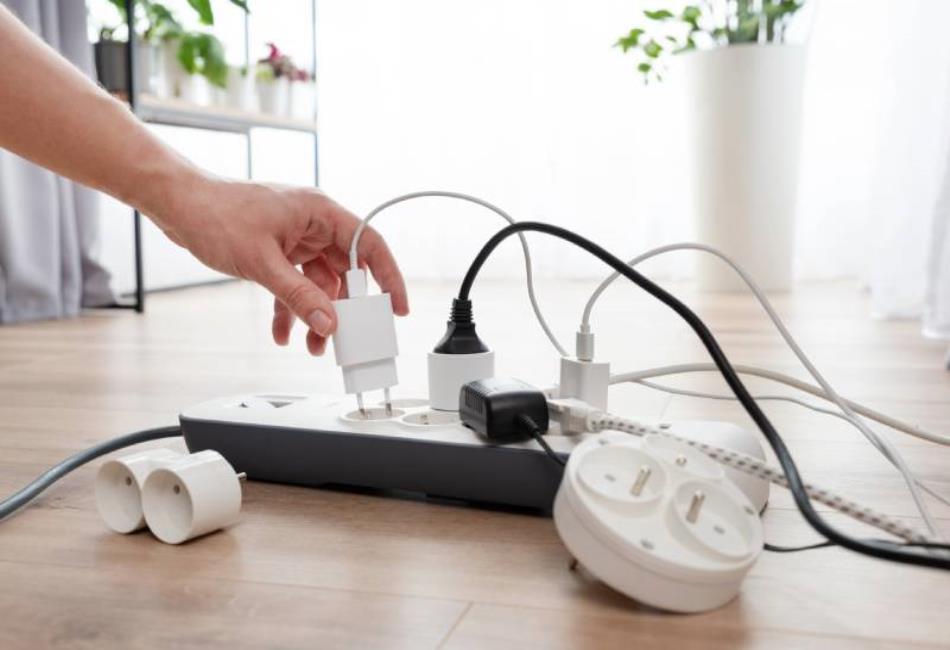Outlets: we don’t often think much about them—until we’re crawling under a couch trying to find one, or tripping over extension cords that are doing way too much. But did you know your outlet placement can reveal a lot about your home’s age, design trends of decades past, and even potential safety concerns?
In fact, the layout and type of electrical outlets in your home can act like a quirky diagnostic tool. They offer clues into the history of your house—and might be trying to tell you it’s time for an upgrade. If you’re starting to notice outdated or oddly placed outlets (or a lack of them altogether), it may be a good time to call a trusted electrician Idaho Falls to modernize your setup.
The Tale of the Lone Outlet
If your living room has just one or two outlets—likely hidden behind furniture or inconveniently placed—you’re probably living in a home built before the 1970s. Back then, homes weren’t filled with the tech and gadgets we rely on today. One outlet per room was considered plenty. Fast forward to today, and our charging needs have skyrocketed.
Not only is having too few outlets inconvenient, but it’s also a red flag. If you’re overloading a single outlet with power strips and extension cords, that’s a safety hazard waiting to happen. Overloaded circuits can spark fires or damage appliances. An electrician in Idaho Falls can evaluate your current wiring and install additional outlets to meet modern electrical demands.
Low and Lonely: Outlets Near the Floor
Have you noticed that all your outlets are placed unusually low, close to the baseboard? That was the standard in mid-century and older homes. While it’s not inherently unsafe, it’s another clue that your home’s electrical system may not be up to code.
Modern builds often place outlets higher up, making them easier to access—especially important for older homeowners or those with mobility challenges. Replacing outdated outlets and upgrading their positioning is a relatively simple job for a licensed electrician and can significantly improve your home’s function and comfort.
High and Random? Welcome to the ’90s
If your outlets are strangely high on the wall—particularly in kitchens or bathrooms—you might be living in a 1990s or early 2000s remodel zone. Builders during this time often favored form over function, or they simply retrofitted electrical work into older layouts without a full rewire. These decisions can leave you with outlets in impractical or unsafe spots.
This is particularly concerning in areas with water, like bathrooms or kitchens. If your outlets aren’t Ground Fault Circuit Interrupter (GFCI) protected, they pose a real risk of electrical shock. A qualified electrician Idaho Falls can replace these with safe, code-compliant GFCI outlets and ensure your home meets today’s safety standards.
The Great Outlet Desert: Hallways and Closets
It’s 2025 and yet many homes—especially those built before the 1980s—still lack outlets in hallways, entryways, or closets. You might not miss them until you’re trying to plug in a vacuum or charge a cordless tool. The National Electrical Code now recommends more frequent outlet spacing to reduce the need for cords stretching across floors (a major tripping hazard).
If your home feels like an outlet desert, it’s not just an inconvenience—it could indicate an outdated electrical system. An experienced electrician can assess your current circuits and install new outlets without overloading your panel.
The Outlet Style Check
Are your outlets two-prong instead of three-prong? Do they wiggle when you plug something in? Are they discolored or warm to the touch?
These are all signs of outdated or unsafe outlets, regardless of where they’re located. Two-prong outlets were common until the 1960s but lack grounding, which protects against surges. Loose or warm outlets are often caused by deteriorating wiring or internal damage. These aren’t just quirky details—they’re safety issues that require immediate attention.
When to Call an Electrician
Outlet placement might seem like a design quirk, but it’s also a practical and safety issue. If your home has any of the following, it’s time to contact an electrician in Idaho Falls:
- Sparse or oddly placed outlets
- Two-prong outlets without grounding
- Overreliance on extension cords or power strips
- Lack of GFCI outlets in bathrooms or kitchens
- Discolored, loose, or warm outlets
A licensed electrician can upgrade your outlets, reposition them for convenience, and ensure your wiring is safe and up to code. This not only improves your daily life—it also increases your home’s resale value and gives you peace of mind.
Your Outlets Are Talking—Are You Listening?
So, take a walk around your home and observe your outlets. Are they where you need them? Do they look like they belong in another decade? If something feels off, don’t ignore it.
Give your home the electrical TLC it deserves. Call a trusted electrician in Idaho Falls to assess your outlet placement, upgrade your system, and make your space safer, smarter, and more efficient.
